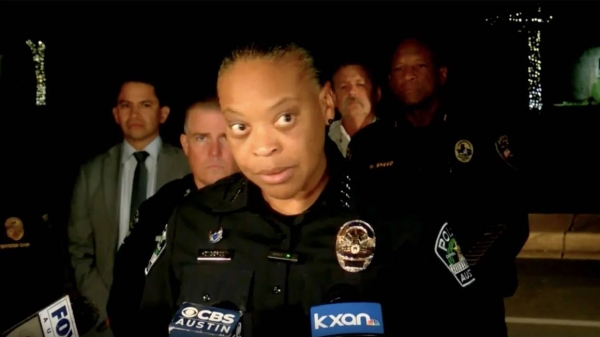
There are two competing schools of thought when it comes to William Shatner’s space mission. The first is characterised by a kind of awestruck wonder over the beautiful symmetry of it all: Shatner starred in Star Trek, Star Trek inspired a generation of engineers, the engineers built a rocket, the rocket flew Shatner into space. The second tends to think that letting a billionaire indulge an actor by flying him to the brink of the atmosphere in a spaceship shaped like a willy might not be the best use of our resources.
Shatner in Space is firmly for the first crowd. A 45-minute documentary about his mission, it airs on Amazon Prime. Jeff Bezos owns Amazon Prime. He also owns the rocket that Shatner flew on. Anyone expecting even an iota of criticism would be better off looking elsewhere.
If you watched the news coverage of William Shatner’s journey into space on Bezos’s Blue Origin spaceship, New Shepard, you’ll have a rough idea of what will happen here. A 90-year-old man, at the invitation of the world’s richest man, travels up to the edge of space and returns transformed. Upon leaving the capsule on its return to Earth, Shatner tries to grasp at the profundity of what he saw up there; wide-eyed and slack-jawed, he struggles to articulate the fragility of life on Earth. Meanwhile, Bezos cuts him off to spray some champagne around like a tinpot go-kart champion.
The champagne moment, unsurprisingly, has been sliced out of Shatner in Space. What’s left walks a fragile line. The show is part monument to Bezos’s ego, because of course it is, but it is also an incredible document of a man at the end of his life witnessing the great beyond. If you can stomach the former, there’s a good chance that the latter will move you to tears.
Here, Shatner acts like a man who knows his time is coming. He speaks almost exclusively with a hushed sincerity that is frequently at odds with those around him. In a quiet moment with Bezos, for example, Shatner leans in and asks if he is scared of death. Coming from anyone else, it would be a stone cold conversation killer. But Shatner’s age, and his yearning to know what’s next, can’t help but draw you in. You are for ever on his side.
In the run-up to the launch, Shatner shares an incredible story. When Star Trek was cancelled in the 1960s, his affectations of celebrity cratered around him. His marriage ended. He couldn’t afford a home, so he bought a truck and lived in it. And it’s from the truck that Shatner watched the moon landing. A man who had played an iconic space adventurer, watching mankind’s greatest moment at his lowest ebb. Sure, it’s probably a story he has told countless times before, and over the years it is likely to have been sanded and smoothed for maximum impact, but it lends his space trip a lovely poetry.
The voyage itself is equally revelatory. As the rocket reaches its highest point, and everyone is allowed to unclip themselves, most of the passengers start giggling at the sensation of weightlessness. Not Shatner, though. He clings on to the window, staring at the blackness of space, eyes wide with revelation. “That’s it,” he whispers to himself. “I’ve got it.”
Now, part of me thinks that, if Jeff Bezos got his way, then everything that ever airs on Amazon Prime would be a variation of Shatner in Space. We’d be beaten over the head with long, lush pro-Amazon infomercials that could never really be shown anywhere else because they border so shamelessly on propaganda. But in this instance, I’m inclined to cut it a break. Shatner in Space is a document of what space means to Shatner, and what Shatner means to everyone he has inspired. The sight of him immediately postflight, crying and wrestling with the magnitude of what he has just witnessed, is indescribably touching. What an unexpected treat.












